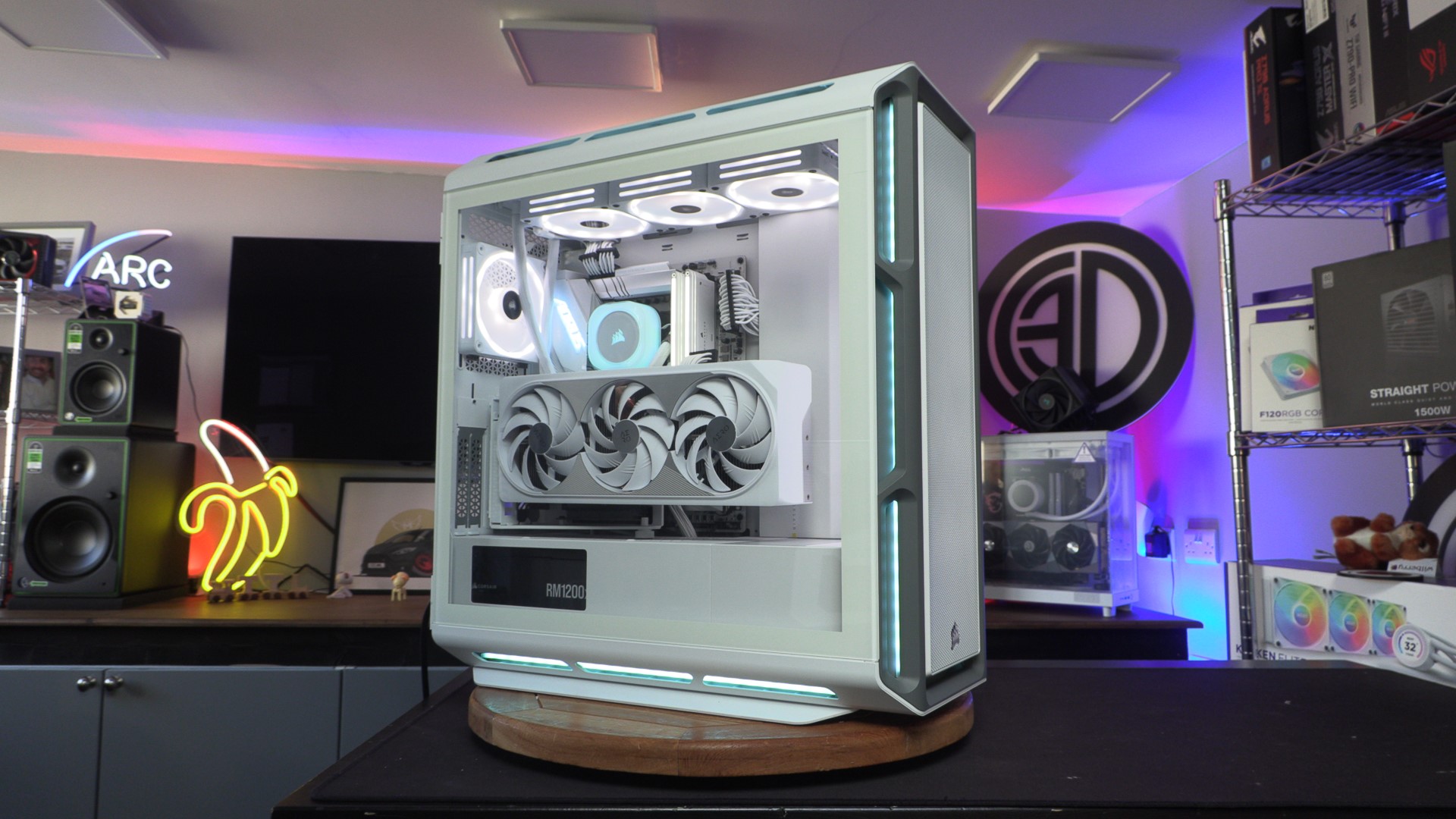Corsair iCUE LINK Smart Component Ecosystem Review & LCD Screen Upgrade Guide
Conclusion – Do we like iCUE LINK
Conclusion – An elegant system that saves a lot of time!
When Corsair revealed iCUE LINK, I was in two minds about it. On the one hand, I loved the idea of simplifying the cable management of RGB-heavy PC builds. That said, the idea sounded expensive and exclusive. Remember, Corsair aren’t making a industry standard connection here. This is a Corsair ecosystem.
What Corsair have created here is a product ecosystem, and it will grow over time. Right now it includes PC fans, lighting kits, CPU liquid coolers, and a variety of water cooling products. Corsair’s list of supported products has expanded significantly since launch, and we expect this list to continue growing well into the future. Corsair has a strong, well implemented idea here, so expect it to be supported well into the future.
iCUE LINK limitations
One limitation that we have found with Corsair’s iCUE LINK ecosystem is the number of products that can be “daisy-chained” together. Each controller can support up to fourteen connected products, with seven being supported in each controller’s output. Corsair’s documentation only said up to 14 devices were supported, so we expected to be able to use all of these devices with a single LINK connection. This was not the case.
When we upgraded our iCUE LINK H150i with its LCD screen upgrade, it became a new device on our LINK controller. This made our 7-fan setup into a 7-fan + one screen setup, which did not work. We needed to change our LINK setup into a two-chain setup, with three fans on one controller and four fans and a screen on the other. Thankfully, redoing our cables only took minutes of work. That’s the joy of iCUE LINK. Even so, we would like to see future controllers support larger device chains.
If I were building a large liquid cooled PC with iCUE LINK products, I would like to be able to connect more devices on a single LINK chain. Yes, most users will not need more than 14 devices, and using two cable chains is not a major issue. I just want to see better support for extreme use cases, and possibly a single controller that can handle a few more devices.
An excellent product for new PC builds
Building and upgrading their iCUE LINK PC was a joy. Cable management was a breeze, and upgrading this system was a simple task. The only downsides of iCUE LINK right now is how new the ecosystem is and its cost. By new, we are not taking about software issues. Corsair’s software is solid. I am mostly talking about the fact that iCUE LINK is fresh and doesn’t support Corsair’s older products. That means that you will basically need to build a new system to take advantage of iCUE LINK’s neat cabling.
Having everything from fans to lighting, liquid cooling components and other accessories connecting to a single, daisy-chainable connector is an excellent idea. Corsair’s implementation of this idea is strong, and aside from the 7 device daisy-chain limit, we have no complaints. This is a strong product from Corsair, and we love it.
Upgrading to a full iCUE LINK system will be an expensive process, but so is buying into any new product ecosystem. The benefits of iCUE LINK is excellent cable management, an excellent selection of compatible products, and an easy upgrade process. Corsair have created an excellent ecosystem here, and we look forward to seeing how it is expanded and improved in the future.
You can join the discussion on Corsair iCUE LINK and Corsair’s iCUE LINK LCD Upgrade on the OC3D Forums.






